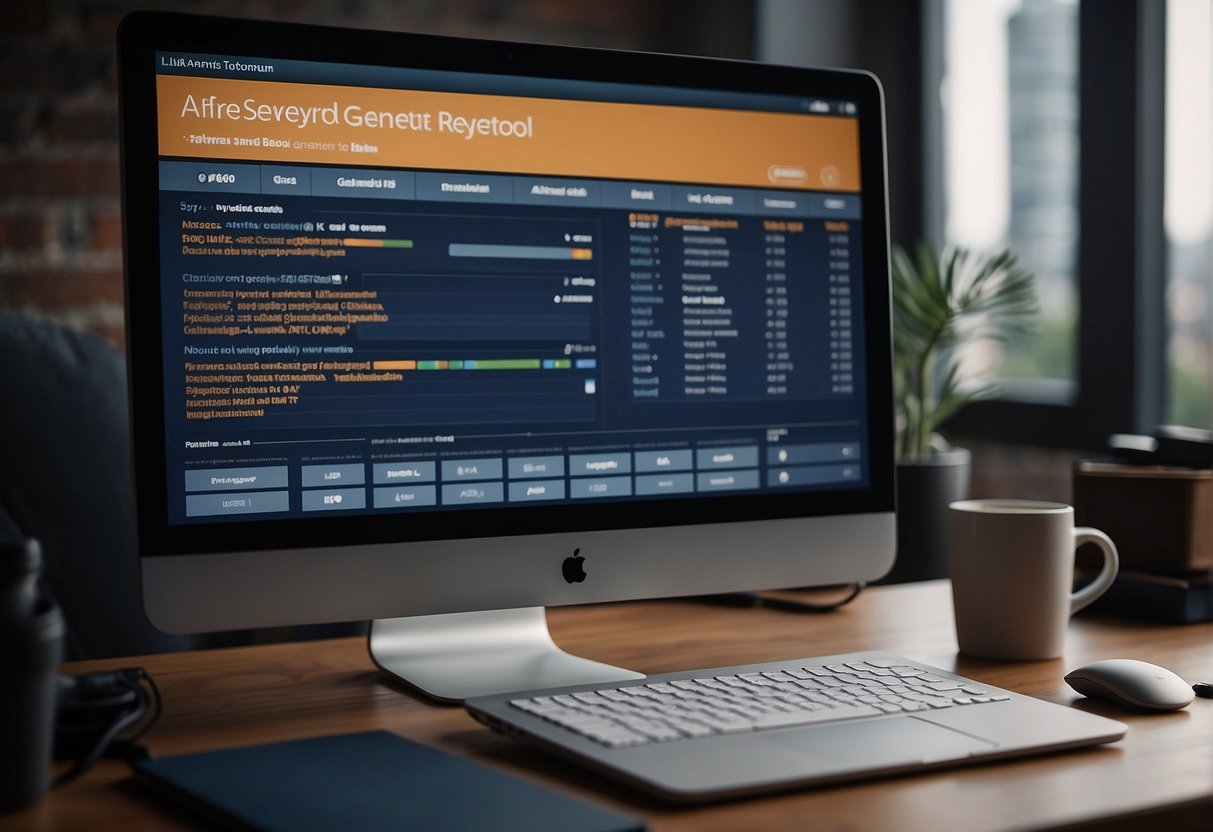Maximizing SEO with XML Sitemap
An XML sitemap is a file that lists all the pages on your website and provides important information about each page, such as when it was last updated and how often it changes. This file helps search engines like Google and Bing understand the structure of your website and crawl it more efficiently. Having an XML sitemap is crucial for SEO because it ensures that search engines can find and index all of your important pages.
In this blog post, we will explain the importance of XML sitemaps for SEO and provide a step-by-step guide on how to create and submit an XML sitemap for your website. We will also discuss the benefits of regularly updating your sitemap, including all important pages, improving crawlability, prioritizing pages for search engines, identifying and fixing crawl errors, improving user experience, and measuring the impact of your sitemap on your website’s SEO.
It’s important to use simple, everyday language in this blog post to ensure that readers with varying levels of technical knowledge can understand and implement the information provided. We will break down complex concepts into easy-to-understand explanations and provide practical tips that readers can follow.
Key Takeaways
- XML sitemap is important for SEO as it helps search engines crawl and index your website more efficiently.
- Creating an XML sitemap is easy and can be done using various online tools or plugins.
- Submitting your XML sitemap to search engines like Google and Bing can help them discover and index your pages faster.
- Updating your XML sitemap regularly ensures that search engines have the latest information about your website’s pages.
- Including all important pages in your XML sitemap, including those that are not linked from your homepage, can improve their visibility to search engines.
Understanding the importance of XML sitemap for SEO
Search engines use XML sitemaps to crawl and index websites more effectively. When a search engine crawls a website, it follows links from one page to another, discovering new pages along the way. However, there may be pages on your website that are not easily discoverable through links, such as pages with low internal linking or pages that are deep within the site’s structure. This is where an XML sitemap comes in.
An XML sitemap acts as a roadmap for search engines, providing them with a list of all the pages on your website and their important details. By submitting an XML sitemap to search engines, you are essentially telling them which pages are important and should be crawled and indexed. This helps search engines understand the structure of your website and ensures that all your important pages are included in their index.
Having an XML sitemap for your website has several benefits for SEO. Firstly, it helps search engines discover and index all of your important pages, ensuring that they appear in search results. This can lead to increased visibility and organic traffic for your website. Secondly, an XML sitemap provides search engines with important information about each page, such as when it was last updated and how often it changes. This can help search engines prioritize crawling and indexing of your pages. Lastly, an XML sitemap can help search engines understand the relationship between different pages on your website, which can improve the overall crawlability and indexing of your site.
Creating an XML sitemap for your website
Creating an XML sitemap for your website is a relatively simple process that can be done using free online tools. Here is a step-by-step guide on how to create an XML sitemap:
1. Start by identifying all the important pages on your website that you want to include in the sitemap. This typically includes your homepage, main category pages, product or service pages, blog posts, and any other pages that you want search engines to crawl and index.
2. Once you have identified the important pages, you can use an online XML sitemap generator tool to create the sitemap file. These tools usually require you to enter the URL of your website and specify any additional parameters, such as the frequency of page updates and the priority of each page.
3. After generating the XML sitemap file, you can download it to your computer. The file will typically have a .xml extension.
4. Next, you need to upload the XML sitemap file to the root directory of your website. This is usually done using FTP (File Transfer Protocol) or through the file manager provided by your web hosting provider.
5. Once the XML sitemap file is uploaded to your website, you need to notify search engines about its existence. This can be done by submitting the sitemap URL through the search engine’s webmaster tools or by adding a reference to the sitemap in your robots.txt file.
When creating your XML sitemap, it’s important to organize it in a way that is easy for search engines to understand and prioritize. You can group related pages together, such as all blog posts or all product pages, to help search engines understand the structure of your website. Additionally, you can specify the frequency of page updates and the priority of each page to provide search engines with additional information about the importance of each page.
Submitting your XML sitemap to search engines
| Search Engine | Submission Process | Frequency | Status |
|---|---|---|---|
| Submit via Google Search Console | Every time sitemap is updated | Successful | |
| Bing | Submit via Bing Webmaster Tools | Every time sitemap is updated | Successful |
| Yahoo | Submit via Yahoo Site Explorer (deprecated) | N/A | Not applicable |
Once you have created your XML sitemap, it’s important to submit it to popular search engines like Google and Bing. This ensures that search engines are aware of your sitemap and can use it to crawl and index your website more effectively.
To submit your XML sitemap to Google, you need to have a Google Search Console account. If you don’t have one, you can create an account for free. Once you have access to Google Search Console, you can navigate to the “Sitemaps” section and add the URL of your XML sitemap. Google will then crawl and index your website using the information provided in the sitemap.
To submit your XML sitemap to Bing, you need to have a Bing Webmaster Tools account. Similar to Google Search Console, you can create an account for free if you don’t already have one. Once you have access to Bing Webmaster Tools, you can navigate to the “Sitemaps” section and add the URL of your XML sitemap. Bing will then use the sitemap to crawl and index your website.
Submitting your XML sitemap to search engines has several benefits for SEO. Firstly, it ensures that search engines are aware of all the important pages on your website and can crawl and index them more effectively. This can lead to increased visibility and organic traffic for your website. Secondly, submitting your sitemap allows you to provide search engines with additional information about each page, such as when it was last updated and how often it changes. This can help search engines prioritize crawling and indexing of your pages.
Updating your XML sitemap regularly
It’s important to keep your XML sitemap up-to-date with new pages and changes to existing pages on your website. This ensures that search engines have the most accurate and current information about your website, which can improve the crawlability and indexing of your site.
To update your XML sitemap, you need to follow the same steps as creating a new sitemap. Identify the new pages or changes to existing pages that you want to include in the sitemap, generate a new XML sitemap file using an online tool, upload the file to the root directory of your website, and notify search engines about the updated sitemap.
Updating your XML sitemap regularly has several benefits for SEO. Firstly, it ensures that search engines are aware of all the new pages on your website and can crawl and index them as soon as possible. This can lead to faster indexing and increased visibility for your new content. Secondly, updating your sitemap allows you to provide search engines with updated information about each page, such as when it was last updated and how often it changes. This can help search engines prioritize crawling and indexing of your pages.
To automate the process of updating your XML sitemap, you can use plugins or scripts that automatically generate and update the sitemap whenever there are changes to your website. These tools can save you time and ensure that your sitemap is always up-to-date.
Including all important pages in your XML sitemap

When creating your XML sitemap, it’s important to include all the important pages on your website that you want search engines to crawl and index. This typically includes your homepage, main category pages, product or service pages, blog posts, and any other pages that are relevant and valuable to your target audience.
By including all important pages in your XML sitemap, you ensure that search engines are aware of these pages and can crawl and index them more effectively. This can lead to increased visibility and organic traffic for your website.
When deciding which pages to include in your XML sitemap, it’s important to prioritize quality over quantity. Only include pages that are relevant and valuable to your target audience. Avoid including duplicate content, thin content, or low-quality pages that provide little value to users. By focusing on quality, you can ensure that search engines prioritize crawling and indexing of your most important and valuable pages.
To prioritize pages in your XML sitemap, you can use the “priority” attribute provided by the XML sitemap protocol. The priority value ranges from 0.0 to 1.0, with 1.0 being the highest priority. You can assign higher priority values to your most important pages to indicate their importance to search engines.
Using XML sitemap to improve crawlability of your website
XML sitemaps can help search engines crawl your website more efficiently by providing them with a clear and organized structure of your site. When search engines have a better understanding of the structure of your website, they can crawl and index it more effectively.
By including all the important pages in your XML sitemap and organizing them in a logical manner, you make it easier for search engines to discover and navigate through your website. This can lead to faster indexing of new content and improved visibility in search results.
Additionally, XML sitemaps can help search engines understand the relationship between different pages on your website. By grouping related pages together in the sitemap, you provide search engines with additional context and information about the structure of your website. This can help search engines prioritize crawling and indexing of your pages, ensuring that all important pages are included in their index.
Improving the crawlability of your website has several benefits for SEO. Firstly, it ensures that search engines can discover and index all of your important pages, which can lead to increased visibility and organic traffic. Secondly, it helps search engines understand the structure of your website, which can improve the overall crawlability and indexing of your site. Lastly, it allows search engines to prioritize crawling and indexing of your pages based on their importance, ensuring that your most valuable content is included in their index.
Using XML sitemap to prioritize pages for search engines
Your XML sitemap can be used to tell search engines which pages on your website are most important and should be crawled and indexed first. By assigning higher priority values to your most important pages, you can indicate their importance to search engines.
When assigning priority values to your pages, it’s important to consider the overall structure and hierarchy of your website. Your homepage is typically the most important page on your website, so it should have the highest priority value. Main category pages or landing pages for important products or services should also have high priority values.
By prioritizing pages in your XML sitemap, you ensure that search engines crawl and index your most important pages first. This can lead to faster indexing and improved visibility in search results for these pages.
Prioritizing pages for search engines has several benefits for SEO. Firstly, it ensures that search engines crawl and index your most important pages as soon as possible, which can lead to increased visibility and organic traffic. Secondly, it helps search engines understand the importance of each page on your website, which can improve the overall crawlability and indexing of your site. Lastly, it allows you to focus on promoting and optimizing your most valuable content, knowing that search engines are prioritizing these pages.
Using XML sitemap to identify and fix crawl errors
Your XML sitemap can be a valuable tool for identifying crawl errors and broken links on your website. When search engines crawl your website using the information provided in the sitemap, they may encounter pages that are not accessible or have broken links. These crawl errors can negatively impact your website’s SEO and user experience.
By regularly checking your XML sitemap for crawl errors, you can identify and fix these issues before they have a significant impact on your website. You can use tools like Google Search Console or Bing Webmaster Tools to monitor the crawl status of your pages and identify any errors or issues.
When you identify a crawl error or broken link, it’s important to investigate the issue and fix it as soon as possible. This may involve updating the URL of the page in your XML sitemap, fixing the broken link on your website, or redirecting the page to a new URL.
Fixing crawl errors and broken links has several benefits for SEO. Firstly, it ensures that search engines can crawl and index all of your important pages without encountering any issues. This can lead to improved visibility and organic traffic for your website. Secondly, it improves the overall user experience by ensuring that users can access all of your pages without encountering any broken links or errors. Lastly, it helps search engines understand the structure of your website and navigate through it more effectively, which can improve the overall crawlability and indexing of your site.
Using XML sitemap to improve user experience
XML sitemaps can also help improve the user experience of your website by making it easier for users to navigate through your site and find the information they are looking for. When users visit your website, they may not always know where to find specific pages or content. By providing them with a clear and organized structure of your site through an XML sitemap, you can help them navigate through your website more easily.
When creating your XML sitemap, it’s important to organize it in a logical and user-friendly manner. Group related pages together and provide clear labels or descriptions for each page. This can help users understand the structure of your website and find the information they are looking for more quickly.
Additionally, XML sitemaps can help users discover new content on your website. When you add new pages or update existing pages, search engines will crawl and index them using the information provided in the sitemap. This can lead to increased visibility of your new content and improved user engagement.
Improving the user experience of your website has several benefits for SEO. Firstly, it can lead to increased user engagement and satisfaction, which can improve your website’s rankings in search results. Secondly, it can increase the likelihood of users sharing your content or linking to your website, which can improve your website’s authority and visibility in search results. Lastly, it can lead to increased organic traffic and conversions, as users are more likely to stay on your website and complete desired actions.
Measuring the impact of XML sitemap on your website’s SEO
It’s important to track the impact of your XML sitemap on your website’s SEO to understand its effectiveness and make any necessary adjustments. There are several metrics that you can track to measure the impact of your sitemap, including organic traffic, rankings, crawl errors, and indexation.
To track organic traffic, you can use tools like Google Analytics or Bing Web Master Tools. These tools allow you to monitor the number of visitors coming to your website through organic search results. They provide valuable insights such as the keywords that are driving traffic to your site, the pages that are receiving the most organic traffic, and the overall performance of your organic search campaigns. By analyzing this data, you can make informed decisions to optimize your website and improve its visibility in search engine results pages.
If you’re interested in learning more about XML site maps and their importance in search engine optimization (SEO), you may find the article “The Role of an SEO Specialist: Navigating the Digital Landscape” by Patrick J. Waters to be a valuable resource. In this article, Waters discusses the various aspects of SEO and how an SEO specialist can effectively navigate the ever-changing digital landscape. To delve deeper into the topic, check out the related article on XML site maps and their role in improving website rankings.
FAQs
What is an XML site?
An XML site is a website that uses XML (Extensible Markup Language) to structure and organize its content.
What are the benefits of using XML for a website?
XML allows for more efficient and flexible data management, as well as easier integration with other systems and applications. It also enables better search engine optimization and accessibility for users with disabilities.
How is an XML site different from a traditional HTML site?
An XML site uses XML to structure its content, while a traditional HTML site uses HTML (Hypertext Markup Language). XML is more flexible and can be used to organize data in a variety of ways, while HTML is primarily used for formatting and displaying content.
What are some examples of XML-based websites?
Many popular websites, such as eBay, Amazon, and Google, use XML to structure and organize their content. Additionally, many news and media websites use XML-based RSS feeds to distribute their content.
Do I need to know XML to create an XML site?
While it can be helpful to have some knowledge of XML, it is not necessarily required to create an XML site. There are many tools and platforms available that can help simplify the process of creating and managing an XML-based website.…






















